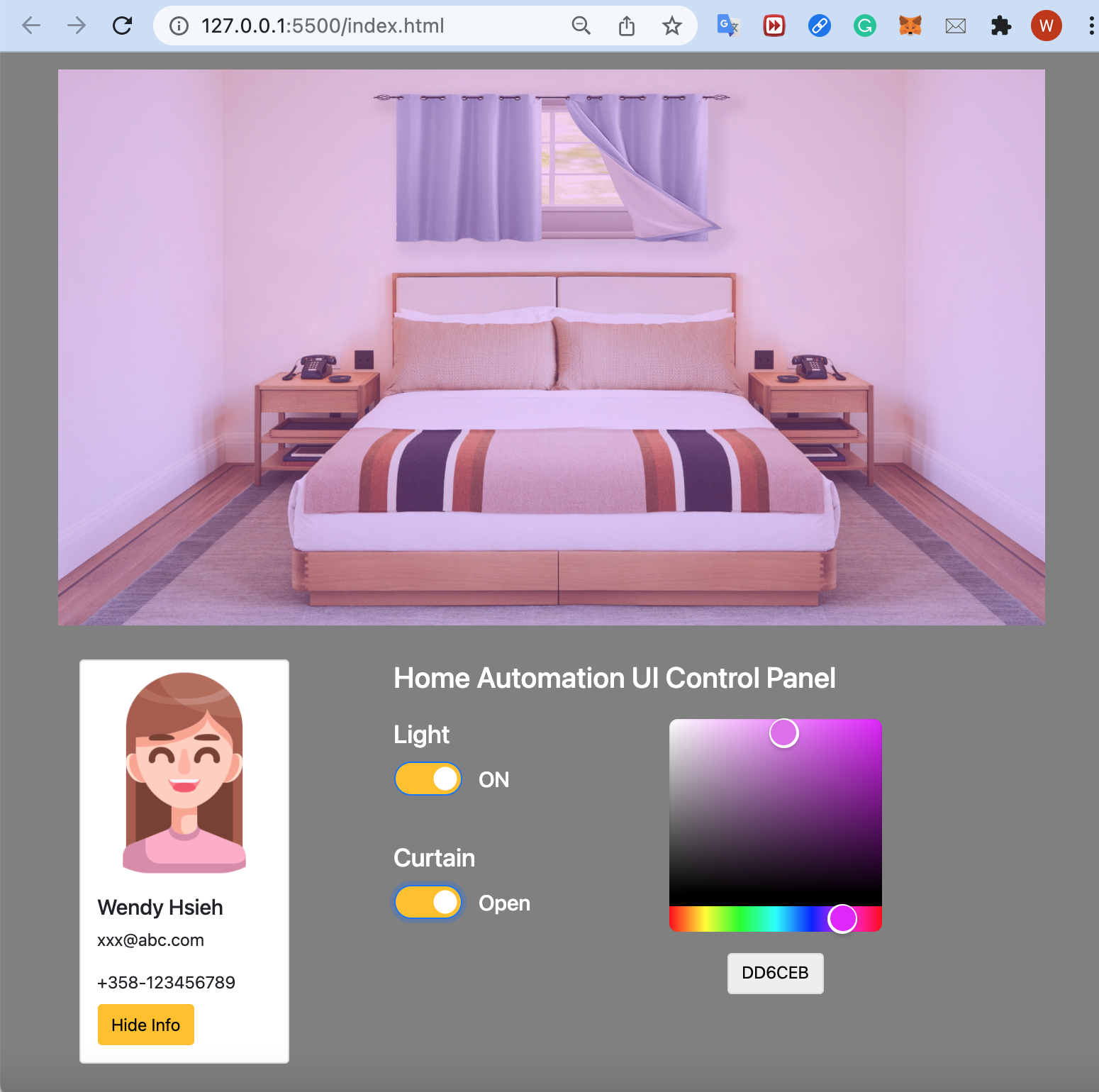A static web application of home automation simulation consisting of UI components built with plain JavaScripts and room images composited with Adobe Photoshop and Adobe Illustrator.
- button switches:
- turning on and off environment light
- opening and closing the curtains
- color picker wheel: chang the light temperature
- user card: showing the house owner's information
- Adobe Photoshop: for creating, mirroring, and editing open and closed curtain images and the room images with multiple layers
- Adobe Illustrator: for creating the black translucent SVG light mask
- Bootstrap: for quickly designing a responsive webpage
- Color Picker Wheel: for changing the color of the black translucent SVG light mask
- To change any SVGs color: for changing the color of an SVG image with a HEX color code
The application serves as a static website that doesn't require running any server-side code.
The application has been tested on Google Chrome, Mozilla Firefox, and Safari for macOS.
First, I categorized the number of UI components that needed to be implemented along with their events. Some UI components, such as the user card, are conveniently packaged as an encapsulated module, while others like switches, color picker wheel, and the room images are easier to manipulate their interaction within the same script.
Second, instead of only allowing users to choose a small number of color swatches, choosing any color they want would be more user-friendly and straightforward. Therefore, a color picker wheel would suit users to control the light temperature, just like painting with a graphics editor.
Next, to simulate the final result of home automation, I composited a real-world room image with a curtain image in Adobe Photoshop. After that, I created a black translucent SVG mask so that the color picker wheel could manipulate the mask hue by changing the value of its CSS filter attribute.
Finally, I arranged the UI components with Bootstrap and hosted the static website on Netlify.

